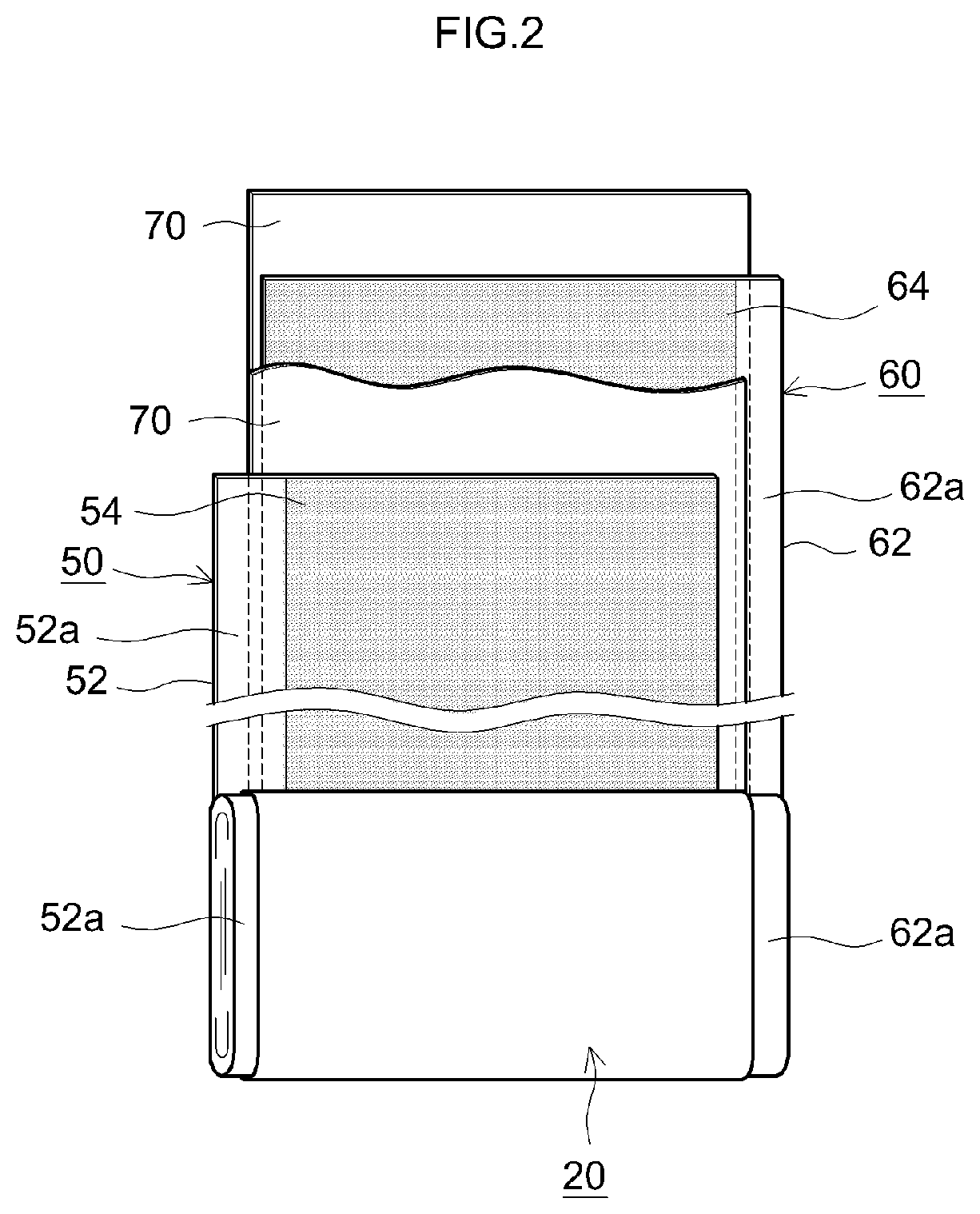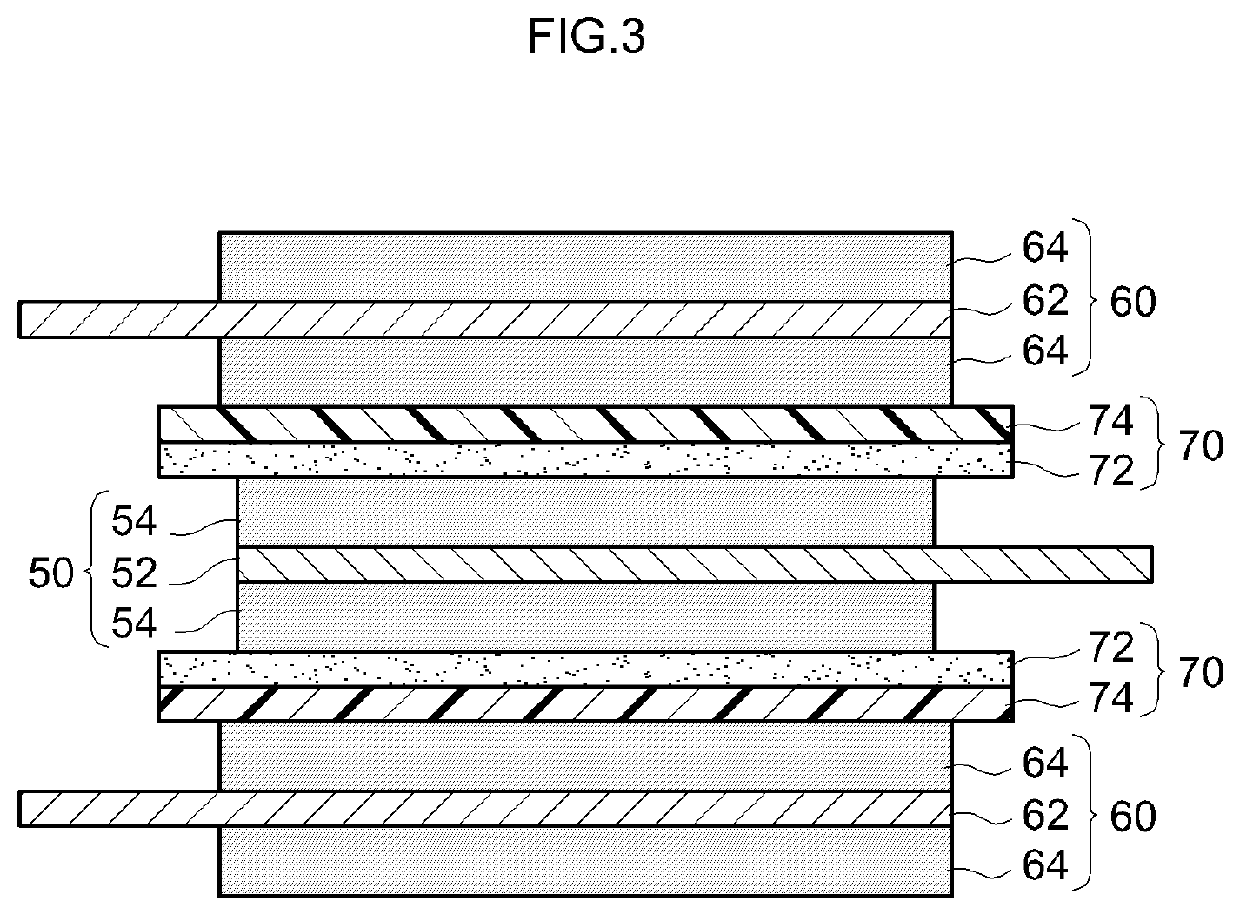Nonaqueous electrolyte secondary battery
a secondary battery and electrolyte technology, applied in the direction of batteries, sustainable manufacturing/processing, cell components, etc., can solve the problems of low-temperature performance, low discharge capacity, low-temperature performance degradation, etc., to improve battery performance, improve the coating film, and improve the effect of resin porosity
- Summary
- Abstract
- Description
- Claims
- Application Information
AI Technical Summary
Benefits of technology
Problems solved by technology
Method used
Image
Examples
Embodiment Construction
[0021]An embodiment of the present teaching will be described below with reference to the drawings. Incidentally, the matters other than those specifically mentioned in the present specification and necessary for the implementation of the present teaching (for example, the general configuration and production process of a nonaqueous electrolyte secondary battery not characterizing the present teaching) can be understood as design matters to be addressed by a person skilled in the art on the basis of the related art in the pertinent field. The present teaching can be carried out based on the contents disclosed in this specification and technical common sense in the field. In addition, in the following drawings, the same reference numerals are attached to members and parts that exhibit the same action. Further, the dimensional relationship (length, width, thickness, and the like) in each drawing does not reflect the actual dimensional relationship.
[0022]In this specification, the term...
PUM
| Property | Measurement | Unit |
|---|---|---|
| viscosity | aaaaa | aaaaa |
| viscosity | aaaaa | aaaaa |
| average secondary particle diameter | aaaaa | aaaaa |
Abstract
Description
Claims
Application Information
 Login to View More
Login to View More - R&D
- Intellectual Property
- Life Sciences
- Materials
- Tech Scout
- Unparalleled Data Quality
- Higher Quality Content
- 60% Fewer Hallucinations
Browse by: Latest US Patents, China's latest patents, Technical Efficacy Thesaurus, Application Domain, Technology Topic, Popular Technical Reports.
© 2025 PatSnap. All rights reserved.Legal|Privacy policy|Modern Slavery Act Transparency Statement|Sitemap|About US| Contact US: help@patsnap.com



